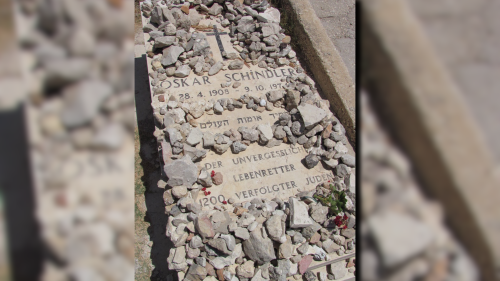What really happened on Sunday, April 7, 2013, during the St. Mark Cathedral attack in Cairo, where two Christians were killed and dozens wounded by Egyptian forces? As usual, different reports gave different versions, but now that the smoke has settled, the truth as first asserted during the attack by Coptic activists has been confirmed.
Back during the conflict, when state security was actually besieging the St. Mark cathedral—the most sacred building for millions of Coptic Christians and the only apostolic see serving the entire continent of Africa—Amir Ramzi, a Coptic man who managed to escape the compound where hundreds of other Copts were trapped all night was interviewed by phone on the popular Egyptian show, Cairo Today.
According Ramzi, president of the criminal court, “Today we witnessed a day unprecedented in the history of modern Egypt, a day when holy sites are attacked both by the interior ministry and the mob.”
The program’s host, Amr Adib, asked him to back up, evidently finding it difficult to implicate the interior ministry in an attack on an Egyptian landmark. So Ramzi began from the beginning, explaining how after the funeral service for another six Christians killed the day earlier—including one intentionally set aflame—in a conflict that started by Muslims sexually harassing a Christian girl, many of the Copts coming out of the cathedral were angry and protesting. Waiting for them in the streets were Islamic extremists, who began hurling rocks on the Copts, who responded in like manner. Eventually police appeared; Ramzi himself called a police chief, who assured him that the Copts should just go back into their cathedral, until the police secure the situation:
So that’s what we did, thinking police would come to protect and separate the clashers. We were surprised to find that the police began to intervene and become another party to the conflict, attacking the Copts who were fighting back against the [Muslim] youth who were attacking them, and shooting gas bombs into the cathedral compound, which caused extreme poisoning, to the point that the ambulance cars were not enough to take the sick.
He further confirmed that live ammunition was fired on the Copts who refused to relent and fought back fiercely, primarily with rocks. When Ramzi tried to get them to cool down, they told him that they “were ready to be martyred for our most important church” and “We’re not just children to abandon our cathedral to be set aflame or have someone attack it.”
Ramzi said that he could not really blame these Christian defenders, adding that many of them were already in heavy mourning for the six Copts murdered the day earlier, and, with a second attack on their cathedral for the funeral of these same deceased, had reached a point beyond frustration.
But Ramzi’s most important and (at the time) controversial assertion was the role played by Egypt’s Interior Ministry. Among other things, police and security figures would tell the beleaguered Copts everything is okay, that matters were secured, “only to find another five gas bombs thrown their way, not to mention live ammunition fired at them.” Similarly, He said that security kept circling the cathedral, shooting gas bombs at every door: “Why, why would they do this”? Ramzi implored on the phone. When he and others contacted police, urging them to bring an armored vehicle in front of the cathedral to guard it, it came. But far from protecting the cathedral, he personally saw “the [Muslim] youth” standing atop it, throwing rocks and Molotov cocktails at the cathedral.
When the host continued to express dismay, and even doubt, that state security would really behave this way, the eyewitness articulated an important question: the one thing that everyone agreed to is that, for hours, there were at least 30-40 Muslim youth hurling projectiles and Molotov cocktails at the cathedral, “so can you tell me why security didn’t stop them or apprehend them? Was Egypt’s entire state security unable to stop a mere 30-40 youth from vandalizing the nation’s cathedral?”
When the host said, “but they arrested some ten people,” Ramzi scoffed: “What are you thinking? You’ll find that the majority of them are Christian.”
Time has proven all of Ramzi’s eyewitness assertions true. Soon after his interview, which was conducted even as the cathedral was still under siege, several pictures were published, including by Youm7, a prominent Egyptian paper, showing Muslims shooting rifles and throwing rocks and other projectiles at the cathedral, while security forces stand by. One picture shows a masked man in civilian clothes sitting in an Egyptian armored vehicle. Even the Western mainstream media recently came around to affirming that Egyptian security forces were involved in the attack on the cathedral. And, true to Ramzi’s prediction, the only people to be arrested in connection with this latest atrocity against Christianity were Christians themselves—for daring to protect their holiest site against an Islamic attack.
Raymond Ibrahim is author of the forthcoming book, Crucified Again: Exposing Islam’s New War on Christians. He is a Shillman Fellow at the David Horowitz Freedom Center and associate fellow at the Middle East Forum.







